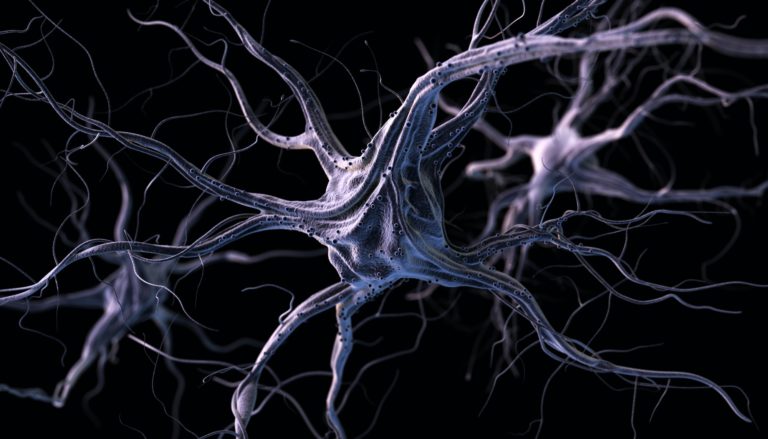Dysautonomia is a disorder in the Autonomic Nervous System (ANS). This part of the body is responsible for controlling digestion, blood pressure, heart rate, internal temperature, and other automatic functions in the body. In this health condition, there are parts of the ANS that is not working as they should. This disorder is also called “Autonomic Dysfunction.” It can develop in anyone regardless of age and gender. But it is more common in women. There are people diagnosed with this health problem at their birth, while some develop it in the later part of their life.
Dysautonomia could also happen due to complications in surgery, pregnancy, or trauma in the body. Side effects of illnesses like diabetes which cause damage to the nerves are another reason Dysautonomia occurs. Certain body infections could also lead to this autonomic dysfunction.
Dysautonomia could be primary or secondary. Primary Dysautonomia is the type where the ANS is the only affected system. On the other hand, secondary Dysautonomia is part of a different health condition like diabetes. The most common form is primary Dysautonomia. However, it could be in. Let’s take a look at those now.
This type of Dysautonomia is mostly diagnosed in the younger generation, with a bigger percentage in females. POTS affects blood circulation, which increases the heart rate resulting in dizziness, shortness of breath, or fainting.
People with Neurally mediated syncope are at risk of fainting when they stand up. This is due to the drop in blood pressure of the body.
Familial Dysautonomia is caused by gene mutation – the ELP1 gene. This is an inherited disorder. Most of the time, symptoms show up in the early stage of infancy.
This type of Dysautonomia is usually found in people who are 60 years old or older. Some people call it the “Bradbury-Eggleston syndrome.” People with this disorder experience chest pain, visual problems, and fatigue.
Dysautonomia can affect different nerve pathways causing different symptoms. Some symptoms could go away in just a few minutes, while others experience symptoms daily. Some symptoms tend to get worst over time.
Common Symptoms:
Serious Symptoms:
Since these are serious symptoms, it is best to seek immediate medical intervention once you experience them. Dysautonomia can be life-threatening if not managed well.
The common causes of Dysautonomia are medical conditions like Diabetes and Parkinson’s Disease, genetic conditions, and complications due to drugs and medication. It is also common for Dysautonomia to run in families.
The other causes of Dysautonomia occur as part of other illnesses like the following:
There are also cases of Dysautonomia triggered by medications like medicines for high blood pressure and drugs for anxiety. Excessive intake of alcohol and a certain type of drugs could also lead to this Autonomic Dysfunction. People who experience vitamin deficiency could also be at risk of Dysautonomia.
Every experience of Dysautonomia is different. Dysautonomia is a health condition that greatly affects the life of a person. Some people experience serious symptoms that prevent them from having a normal life. This can become so severe that it prevents them from working.
Another problem with Dysautonomia is when it affects sleep. We all know that sleep is a very important component of living.
All these potential impacts on the patient’s life could lead to severe anxiety and depression, a common symptom of Postural orthostatic hypotension syndrome (POTS).
It is good to know that the medical and chiropractic fields are doing their best to advance the treatment and understanding of this condition.
Treating Dysautonomia includes proper management of its symptoms. One way to do this is through proper nutrition. The right nutritional advice depends on the type of Dysautonomia the person is dealing with.
Some of the general diet and nutrition tips include:
Unfortunately, until today there is no cure for primary dysautonomia. However, doctors and chiropractors deal with the condition by addressing the symptoms.
The medical and chiropractic treatments for Dysautonomia aim to reduce the symptoms that the person is experiencing. This way, the individual could get into a medical program to help strengthen the condition of the body. The body needs to be strong enough to compensate for the malfunction of the Autonomic Nervous System.
Treatment is different for each individual. This is because the combination of symptoms varies. Some people experience only mild symptoms, while for some, there is a combination of serious symptoms. The doctor specializing in this type of disorder will advise patients to get into various therapies, including chiropractic care.
Primary Dysautonomia is treated with symptomatic and supportive care. Chiropractors work with the central nervous system, particularly the spinal cord because it controls the body’s automatic functions, such as blood pressure, balance, and other critical functions. Dysautonomia is mainly caused by the autonomic nerve system, which chiropractors address.
A misaligned spine causes nerve problems, which lead to body dysfunctions. Spinal chiropractic adjustments restore the parasympathetic and sympathetic nervous systems. Furthermore, chiropractic care aids in the restoration of brain-body communication. Contact us today for more information or to schedule a visit with us!

Janes Spinal Care offers personalized care as a part of our full chiropractic services. Contact our team of chiropractic professionals today to schedule your consultation!
Visit Us
850C Wade Hampton Blvd Suite 2-C, Greenville, SC 29609